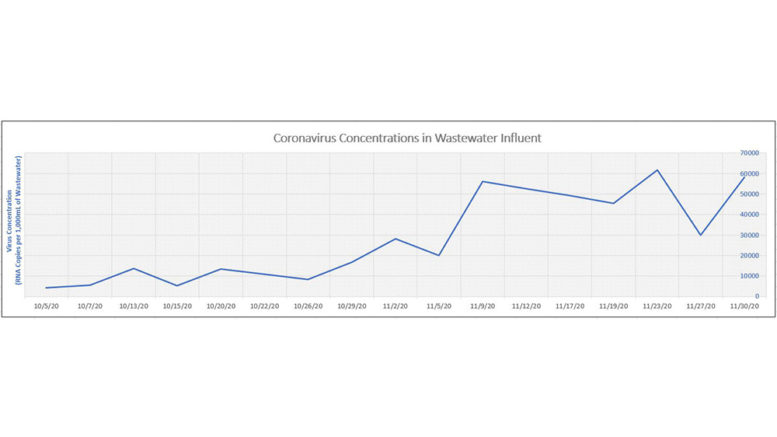The City of Carmel continues to test its wastewater to determine the prevalence of COVID-19 infections within the community. These studies can show an increase of the virus in the community up to 10 days ahead of a possible spike in positive cases where medical care is required.
Wastewater samples are being collected at the Carmel Wastewater Treatment Plant and analyzed for the presence of SARS-CoV-2, the coronavirus that is causing the infections.
Mayor Jim Brainard said the City is taking this extra step to assist local hospitals as they respond to a growing number of patients. The additional evidence of positive tests will allow hospital leaders to make more informed decisions on matters such as hospital staffing, scheduling elective surgeries, allocation of pharmaceuticals and other matters. In addition, the data helps the State coordinate patient placement and employers to make better decisions about business gatherings and whether employees should work at home.

Brainard
“Testing the wastewater coming into our sewage plant allows us to provide vital information to hospitals and businesses with advance warning that they may experience a spike in COVID-19 cases. Even a few days’ notice can help our community prepare for an increasing number of cases,” Brainard said. “We all need to do what we can to help our vital healthcare workers and this is one way that Carmel can provide useful information, which will allow our local hospital administrators to make decisions based on scientific data.”
To test for COVID, copies of viral RNA (DNA) are extracted from the wastewater and quantified so that researchers may trend the numbers and determine if there are spikes or decreases in the wastewater concentrations. Monitoring RNA in wastewater can reveal viral occurrence or reemergence up to two weeks ahead of medical testing. Likewise, it can correlate to the number of infected individuals in the community, whether they are symptomatic or asymptomatic. Therefore, it can measure the scope of an outbreak independent of patient testing and hospital reporting.
The City has been analyzing samples of the incoming wastewater (influent) at the treatment plant for SARS-CoV-2 since the beginning of May when viral concentrations were really high. In June, viral concentrations in the wastewater dropped rapidly and the virus was undetectable in many of the samples. Because of that, the City researched and found two labs that were able to detect the virus at lower concentrations. Samples were sent to each lab twice a week for approximately two months. The data reported by both labs was statistically similar and showed that viral concentrations were relatively “moderate” and fairly consistent throughout August and September.
In October, the City continued to analyze samples using one of the two aforementioned labs at a schedule of twice per week. Starting mid-October, viral concentrations in the wastewater started to spike rapidly. From Oct. 26 to Nov. 17, viral concentrations were almost doubling each week. Since Nov. 19, the viral concentrations have decreased slightly each week until now. The viral presence remains high, but the concentrations seem to be trending downward.
The viral concentrations that the City has trended since August have correlated very closely with Hamilton County’s COVID-19 caseloads. Likewise, the spikes in infections that have been reported over the month of November can be confirmed with the SARS-CoV-2 RNA concentrations in the wastewater. Therefore, the viral RNA concentrations in the wastewater can be used to confirm the prevalence of COVID-19 infections within the community.
As advancements are made in the methodology of quantifying SARS-CoV-2 viral RNA, city officials say they hope to use wastewater epidemiology as an early prediction of spikes in caseloads in conjunction with utilizing it as a confirmatory tool of patient testing and hospital reporting.

